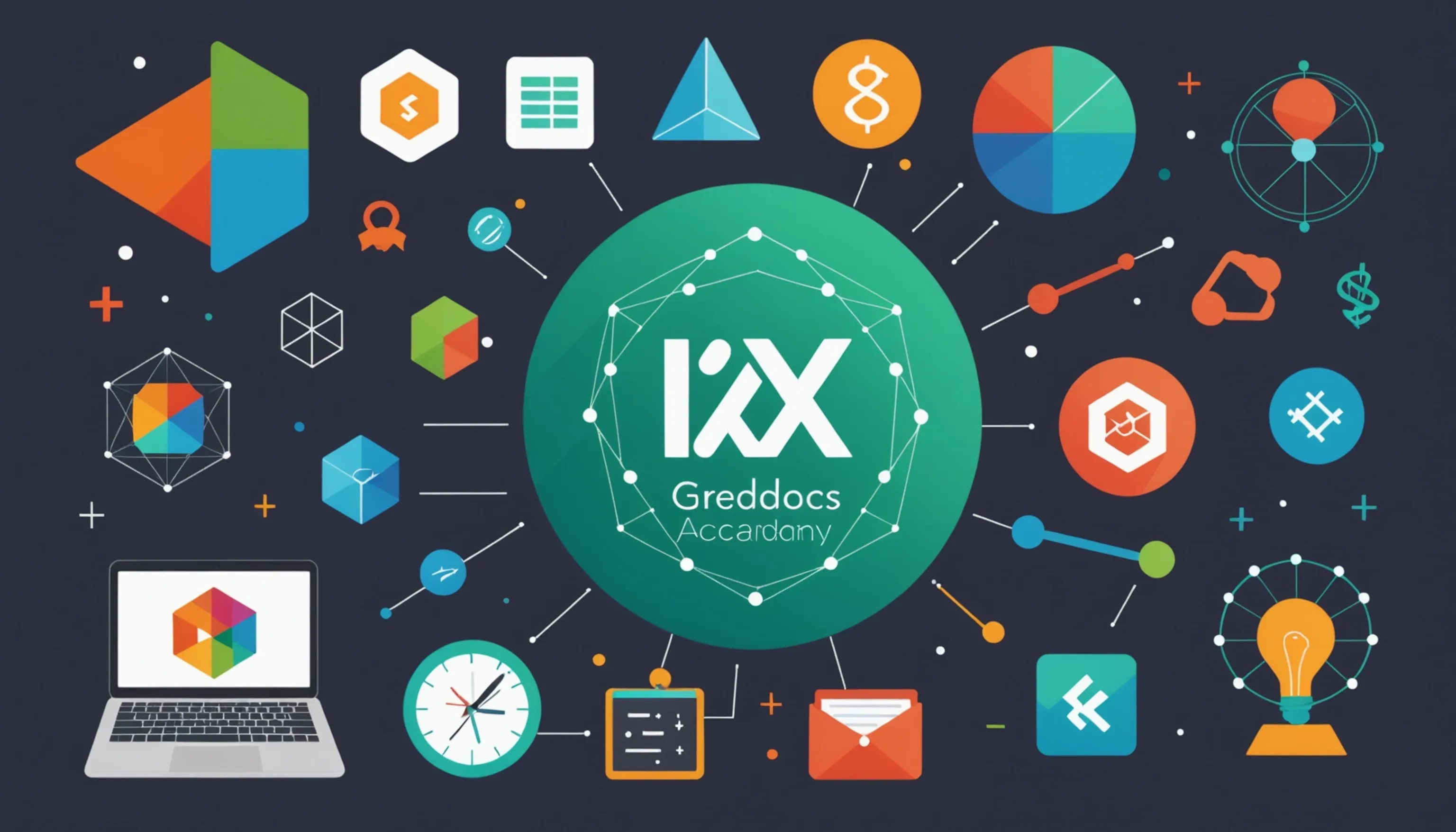EdTech for Math Learning
 HvWHenry van Wagenberg
HvWHenry van Wagenberg
Understanding EdTech in Mathematics
Understanding EdTech in Mathematics involves recognizing how technology enhances math learning for students. Educational technology, or EdTech, refers to digital tools and resources designed to facilitate teaching and learning. In mathematics, EdTech can provide interactive experiences that engage students and make complex concepts easier to grasp.
By utilizing various platforms and applications, students can practice problem-solving, receive immediate feedback, and collaborate with peers. This modern approach not only improves understanding but also fosters a positive attitude towards math, making it an essential component of today’s educational landscape.
What is EdTech?
EdTech, short for educational technology, encompasses a wide range of digital tools, resources, and applications aimed at enhancing the learning experience. It includes everything from online courses and interactive software to mobile apps and virtual classrooms. EdTech is designed to support both teachers and students, making education more accessible and engaging.
In the context of mathematics, EdTech tools can transform traditional teaching methods. For instance, interactive platforms allow students to visualize complex mathematical concepts through dynamic simulations and real-time problem-solving exercises. This is particularly beneficial for visual learners, as it helps them grasp abstract ideas by seeing them in action.
Moreover, EdTech can personalize learning. Many programs use adaptive learning technologies, which tailor educational content to meet individual student needs. This means that students can work at their own pace, focusing on areas where they need improvement while advancing quickly through topics they understand well.
Additionally, EdTech promotes collaboration among students. Through online forums and collaborative tools, learners can share ideas, tackle problems together, and support one another in their mathematical journeys. This interactive aspect not only enhances understanding but also builds a community of learners.
Overall, EdTech represents a significant shift in how mathematics is taught and learned, providing innovative solutions that cater to diverse learning styles and making math education more effective and enjoyable.
Benefits of EdTech for Math Learning
The benefits of EdTech for math learning are numerous and impactful, fundamentally transforming how students engage with mathematical concepts. One of the primary advantages is the enhanced engagement that these tools provide. Interactive apps and online platforms make learning math fun, turning complex problems into games or challenges that students are eager to tackle.
Another significant benefit is the ability to offer personalized learning experiences. Many EdTech tools employ adaptive learning algorithms that assess a student's understanding and adjust the difficulty level accordingly. This personalized approach ensures that students can work at their own pace, allowing them to spend more time on challenging topics while moving quickly through areas they already understand.
EdTech also facilitates immediate feedback, which is crucial for learning. Students can receive instant assessments on their work, helping them identify mistakes and correct them in real-time. This immediate response helps reinforce learning and encourages a growth mindset.
Moreover, EdTech promotes collaboration among peers. Online forums and group projects enable students to communicate and solve problems together, enhancing their understanding through discussion and teamwork. This collaborative environment prepares them for real-world scenarios where teamwork and communication are essential.
Finally, the use of EdTech in math education helps bridge gaps for students who may need additional support. Online tutoring services and extra practice resources are readily available, ensuring that all students can access the help they need to succeed.

Popular EdTech Tools for Math Education
There are several popular EdTech tools for math education that enhance learning experiences. One of the most widely used is Khan Academy, which offers comprehensive lessons and practice exercises across various math topics. IXL is another tool that provides personalized practice, adapting to each student's learning pace.
GeoGebra allows students to visualize mathematical concepts through dynamic geometry software. Prodigy Math gamifies learning, making math practice enjoyable for students. Lastly, Desmos is a powerful graphing calculator that helps students explore functions and data visualization. These tools collectively foster a more engaging and effective math learning environment.
Interactive Math Apps
Interactive math apps have revolutionized how students learn and engage with mathematics. These applications provide a hands-on approach, allowing learners to manipulate numbers, shapes, and equations in a dynamic environment. With features like touch screens and interactive graphics, students can visualize complex mathematical concepts, making them easier to understand.
One of the standout benefits of interactive math apps is their ability to cater to different learning styles. For instance, visual learners can benefit from apps that use graphics and animations to represent mathematical problems, while auditory learners can engage with apps that provide verbal instructions and feedback. This flexibility enhances overall comprehension.
Popular interactive math apps such as Mathway and Photomath enable students to input problems and receive step-by-step solutions, promoting independent learning. These apps not only assist with homework but also foster critical thinking skills as students analyze the steps taken to arrive at an answer.
Additionally, many interactive math apps incorporate gamification elements, transforming learning into an enjoyable experience. By earning rewards, badges, or unlocking levels, students are motivated to practice more frequently and improve their skills. This game-like environment reduces anxiety around math, making it feel less intimidating.
Overall, interactive math apps not only enhance engagement but also provide personalized learning experiences, making them invaluable tools in today’s educational landscape. They empower students to take control of their learning and develop a deeper understanding of mathematical principles.
Online Math Tutoring Platforms
Online math tutoring platforms have become increasingly popular, offering students personalized assistance in a convenient digital format. These platforms connect learners with qualified tutors who can provide one-on-one support tailored to individual needs. This personalized approach is particularly beneficial for students who may struggle with specific concepts or require additional practice outside the classroom.
One notable advantage of online math tutoring platforms is their flexibility. Students can schedule sessions at times that work best for them, making it easier to fit tutoring into busy lives. This accessibility encourages regular practice and helps to reinforce learning in a supportive environment.
Platforms like Wyzant and Chegg Tutors offer a variety of tutoring options, including live video sessions, text chat, and on-demand help for homework questions. This variety allows students to choose the method that suits their learning style best. Furthermore, many of these platforms provide resources such as practice problems, instructional videos, and progress tracking, which can enhance the learning experience.
Additionally, online tutoring can break down geographical barriers, allowing students to connect with experts from around the world. This access to a diverse pool of tutors can provide insights into different problem-solving techniques and approaches, enriching the learning experience.
Overall, online math tutoring platforms offer a valuable resource for students seeking to improve their mathematical skills, build confidence, and achieve academic success. By providing tailored, flexible support, these platforms play a crucial role in modern education.

Gamified Learning Platforms
Gamified learning platforms have emerged as a powerful tool in math education, blending entertainment with educational content to engage students more effectively. By incorporating game-like elements into learning experiences, these platforms motivate students to participate actively in their math studies. This approach transforms traditional learning methods, making math practice feel less like a chore and more like an enjoyable activity.
One significant advantage of gamified learning is its ability to enhance student motivation. Platforms such as Prodigy Math and Kahoot! allow students to earn points, badges, or rewards for completing tasks and achieving milestones. This reward system creates a sense of accomplishment and encourages healthy competition among peers, driving students to improve their skills and knowledge.
Furthermore, gamified learning platforms often feature interactive challenges and levels that adapt to a student’s proficiency. This personalization ensures that learners are consistently challenged at the appropriate level, which helps to build confidence as they master new concepts. The immediate feedback provided by these platforms also aids in reinforcing understanding and correcting mistakes quickly.
Additionally, gamification promotes collaboration through multiplayer options, allowing students to work together to solve problems and compete against each other. This social aspect fosters teamwork and communication skills, essential for success in both academic and real-world scenarios.
In summary, gamified learning platforms not only enhance engagement and motivation in math education but also provide an effective means of developing critical thinking and problem-solving skills, making them invaluable resources for students and educators alike.
How Parents and Teachers Can Support EdTech in Math
Parents and teachers play a crucial role in supporting EdTech in math education. One effective way is by encouraging the use of educational technology at home. Parents can help their children explore various interactive math apps and online resources that make learning engaging and fun. Setting aside regular time for these activities can reinforce math concepts learned in school.
Teachers, on the other hand, can integrate EdTech tools into their lesson plans. By incorporating platforms like Khan Academy or Prodigy Math, they can provide students with additional practice and personalized learning experiences. Additionally, teachers should communicate with parents about the EdTech tools being used, helping them understand how to support their child's learning outside the classroom.
By fostering a collaborative environment between home and school, both parents and teachers can enhance students' math skills and confidence through effective use of EdTech.
Encouraging Technology Use at Home
Encouraging technology use at home can significantly enhance a child's math learning experience. Parents can start by creating a technology-friendly environment that promotes curiosity and exploration. This involves setting up a dedicated space where children can comfortably engage with their devices, whether it's a tablet, computer, or educational apps.
One effective approach is to introduce a variety of math-focused educational apps that cater to different learning styles. For instance, apps like Mathletics or Prodigy Math provide gamified learning experiences that make math practice enjoyable. Parents should encourage their children to use these apps regularly, setting aside specific times each week for math activities that incorporate technology.
Additionally, parents can participate in the learning process by engaging with their children during these activities. By discussing the math problems and encouraging questions, parents can reinforce concepts and demonstrate the practical application of math in everyday life. This collaborative approach not only strengthens understanding but also builds confidence.
Moreover, parents should monitor progress and celebrate achievements, no matter how small. Recognizing effort and improvement fosters a positive attitude toward math and technology. By integrating technology into daily routines and emphasizing its value in learning, parents can effectively support their children's educational journey and help them develop essential math skills.
Integrating EdTech into the Classroom
Integrating EdTech into the classroom is essential for enhancing student engagement and improving learning outcomes in math education. Teachers can begin by incorporating a variety of digital tools and platforms that cater to different learning styles and abilities. For instance, using interactive whiteboards allows educators to display engaging math problems and facilitate collaborative problem-solving among students.
Additionally, platforms like Khan Academy and Nearpod provide students with personalized learning experiences. Teachers can assign specific lessons based on individual student needs, enabling them to progress at their own pace. This level of customization ensures that students who may struggle with certain concepts receive the extra support they need.
Moreover, gamified learning platforms such as Prodigy Math can be integrated into lessons to make math practice more enjoyable. By introducing elements of competition and rewards, students are more likely to engage actively in their learning.
Teachers should also encourage collaboration through group projects and discussions facilitated by digital tools. Online forums or collaborative platforms allow students to share ideas and solve problems together, fostering a sense of community in the classroom.
Finally, ongoing professional development is crucial for educators to stay updated on the latest EdTech trends and tools. By continually exploring new resources, teachers can effectively integrate technology into their math curriculum, ensuring that they meet the diverse needs of their students.
Monitoring Progress with EdTech Tools
Monitoring progress with EdTech tools is vital for ensuring that students are effectively mastering math concepts. These tools provide valuable insights into student performance, allowing educators and parents to make informed decisions about instruction and support. Here are several key strategies for utilizing EdTech to monitor progress:
- Data Analytics: Many EdTech platforms, like IXL and ClassDojo, offer robust analytics that track student performance over time. This data can highlight areas of strength and weakness.
- Regular Assessments: Incorporating quizzes and assessments through platforms such as Kahoot! or Quizizz allows educators to gauge understanding in real-time. These platforms provide instant feedback, helping students identify gaps in their knowledge.
- Progress Reports: EdTech tools often generate detailed progress reports that can be shared with parents. These reports can include metrics such as time spent on tasks, concepts mastered, and areas needing improvement.
- Goal Setting: Teachers can set individual learning goals within EdTech platforms. By involving students in the goal-setting process, they become more invested in their own learning journey.
- Collaboration with Parents: Regular communication with parents about their child's progress through EdTech tools fosters a collaborative approach to learning. This partnership can enhance motivation and accountability.
By leveraging these strategies, educators and parents can effectively monitor student progress, ensuring that each child receives the support they need to succeed in math.
